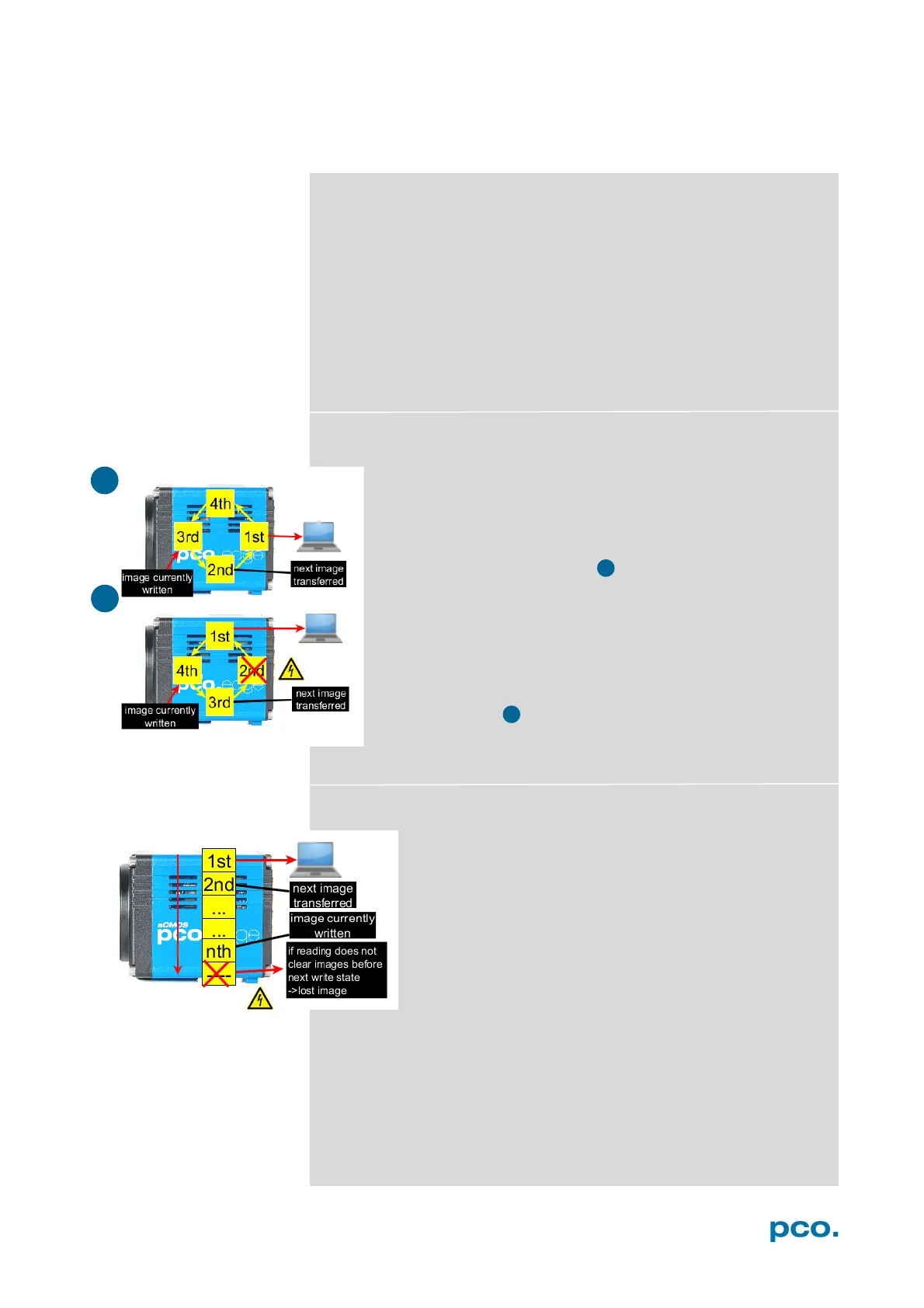84
RING BUFFER AND FIFO A4.4.5
The pco.edge with USB 3.0 interface has a small internal buffer
memory integrated. Each recorded and read out image is directly
transferred to this internal buffer and subsequently the image is
transmitted to the computer, where it is either stored into the RAM or
onto the hard disk drive. There are two transfer modes available: Ring
Buffer and FIFO buffer which can be accessed via SDK function:
PCO_SetStorageMode (see SDK manual).
From user perspective the main difference between both modes
occurs, if for some reasons the USB 3.0 interface behaves slower
than its usual speed. In this case the Ring Buffer delivers faster the
most recent image than the FIFO Buffer mode, which can be helpful
for example if the image should be focused.
Ring Buffer (in camera memory-standard mode)
As described the read out and recorded image is directly
transferred into the internal buffer memory. Subsequently the
next image is stored to the next free space. For the
transmission from the camera to the computer always the
most recent image is used, which works fine in case the
computer does not do anything else than transfer images to its
internal storage memory (RAM).
Now, if the transmission speed of the computer system is
interrupted by e.g. software, it can happen that images get
lost, because in Ring Buffer mode the most recent image has
to be transmitted to the PC. In case of a delay in transmission,
the image in the memory, which waits for transmission will
lose its status as most recent image to the next image, and
will be disregarded for transmission. Hence this image will be
irretrievably lost. Because Ring Buffer always transmits the
most recent image and therefore the most real-time
transmission, it is the ideal mode for e.g. adjustment of focus.
FIFO Buffer (in camera memory)
Like above the read out and the recorded image is directly
transferred into the internal buffer memory. Subseqently
the next image is stored to the next free space in memory.
If all the memory space is occupied the camera stops
storing. In FIFO buffer mode like name stated, FIFO =
first-in first-out, the first stored image is read-out from the
memory first and subsequently transmitted to the
computer. This as well works fine in case the computer
does not do anything else than transfer of images to its
internal storage memory.
Now, if the transmission speed of the computer system is interrupted
by e.g. software, then still the first stored image is readout, and then
the next image is read out and transmitted. However there could be a
delay time (but need not). If now the slowdown causes the FIFO
buffer to be completely filled, then the camera stops storing images
and the next image will irretrievably lost as well, but in this mode it
is lost before storing. This mode is ideal for users who need
maximum transmission security; an image loss is very unlikely.
